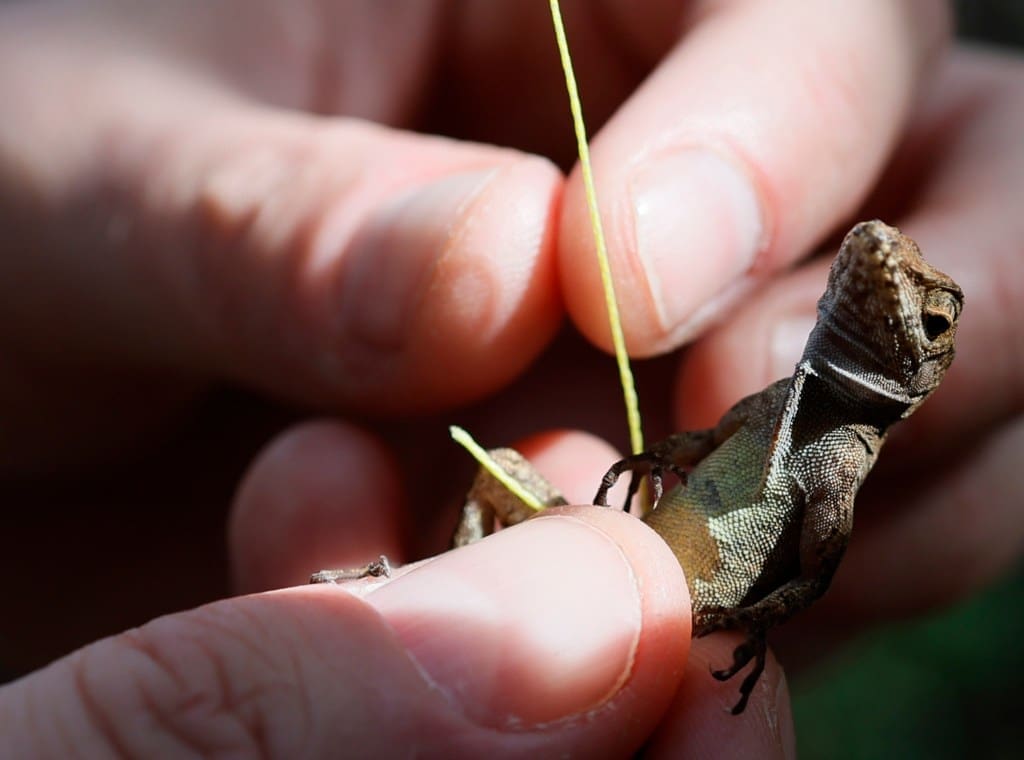At the Fairchild Tropical Botanic Garden in Coral Gables, a surprising ecological event is unfolding, involving two species of invasive lizards. Scientists are observing a fierce competition that may hold the key to understanding the dynamics of adaptation and evolution in a short timeframe.
The serene environment of Fairchild Tropical Botanic Garden belies the intense struggle happening beneath its flora. Cuban brown anoles, long-term residents of South Florida for nearly a century, find themselves now in competition with the relatively new crested anoles from Puerto Rico. This confrontation provides an unprecedented opportunity for biologists to witness rapid evolutionary changes as these species adapt to their new competitive existence.
These nearly indistinguishable reptiles—both slender, similarly colored, and vulnerable to predation—are engaged in a battle for ecological dominance. However, the crested anoles, slightly larger and possessing distinctive tail crests, have an edge over their Cuban counterparts. As a result, brown anoles are being forced to occupy more perilous, lower terrain in their shared habitat.
Research led by James Stroud from Georgia Tech is offering new insights into how quickly these lizards can adapt under competitive pressures. By tagging and tracking the lizards’ physical traits over time, Stroud and his team found that brown anoles with longer legs were more likely to survive amidst the new challenges posed by their crested cousins.
These findings extend beyond mere territory disputes; they highlight a case of behavioral flexibility and physical adaptation that could reshape longstanding evolutionary theories. Brown anoles are adapting to their shifting environment by developing longer limbs, enhancing their ability to flee ground-level predators—a necessity since their relocation from trees to the ground.
Stroud emphasizes that these adaptations can occur rapidly under significant environmental pressures, challenging the traditional view of slow evolutionary change. The work demonstrates that, while species evolution historically was thought to be a slow process, these anoles are proving otherwise through observable, swift genetic changes.
Further studies, coined the ‘Lizard Olympics’, aim to quantify these evolutionary traits through tests of speed, bite force, and grip strength. Already, it’s clear that the physical advantages of longer limbs are crucial for survival in the changed landscape of South Florida’s invasive species.
The broader implication of this study is that evolution can occur on much shorter timescales than previously thought, raising questions about how microevolutionary dynamics contribute to the formation of new species altogether. The rapid generational turnover of these lizards, each living just a few short years, speeds up observable evolutionary changes and potentially informs our understanding of broader ecological and evolutionary principles.
The struggle between brown and crested anoles in South Florida illustrates how species can swiftly adapt to new challenges, offering a nuanced perspective on evolution. As scientists continue their investigations, these lizards may yet reveal more about the complexities and speed of evolutionary processes, inviting a reevaluation of established scientific theories.
Source: Sun-sentinel








